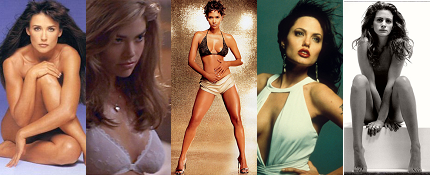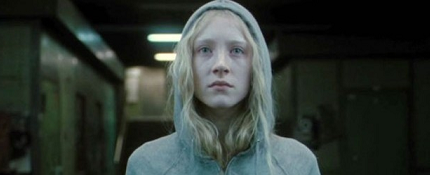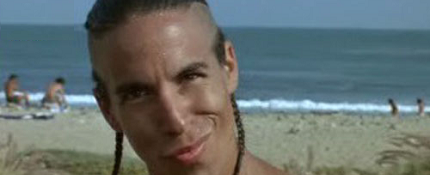 The Fall has an interesting lineage. It was adapted from a 1981 Bulgarian film titled Yo Ho Ho by a trio of screenwriters - Tarsem (who also directed) from India, Nico Soultanakis (whom I can only assume is from Greece), and American Dan Gilroy. Gilroy's twin brother John is a film editor and his older brother Tony is the writer/director of Michael Clayton. The film stars American Lee Pace (TV's Pushing Daisies) and Catinca Untaru, an 11-year old girl discovered by Tarsem in Romania (the film was completed in 2006). On top of all that, it was shot on 26 locations in 18 countries, and is set in both California and in the imagination of the film's lead characters.
The Fall has an interesting lineage. It was adapted from a 1981 Bulgarian film titled Yo Ho Ho by a trio of screenwriters - Tarsem (who also directed) from India, Nico Soultanakis (whom I can only assume is from Greece), and American Dan Gilroy. Gilroy's twin brother John is a film editor and his older brother Tony is the writer/director of Michael Clayton. The film stars American Lee Pace (TV's Pushing Daisies) and Catinca Untaru, an 11-year old girl discovered by Tarsem in Romania (the film was completed in 2006). On top of all that, it was shot on 26 locations in 18 countries, and is set in both California and in the imagination of the film's lead characters.Exhausting, no?
The film clearly shows the effort and heart put into it by the involved players. Eschewing digital effects, Tarsem puts on a dazzling visual show that matches the beauty of his 2000 film The Cell, if not the darkness. Though it is plenty dark at times.
The title refers to the actions that have placed the characters into the hospital where the reality version of the story takes place. Pace's Roy Walker is an actor in 1920s Los Angeles who breaks his back filming a dangerous stunt involving a bridge, a horse and a train, while Untaru's Alexandria is the child of immigrants that broke her arm while working in the fields. She's a curious, friendly child, and she soon happens upon Roy. Morose due to the loss of his girlfriend, Roy sees an opportunity to use the child to his benefit, and piques her interest by telling her a fantastical tale.
It's in the telling of the tale that the film falters somewhat. Though it is haphazard by design (Roy is making it up as he goes), the lack of structure puts the audience in the precarious position of not getting really invested in the story that Roy tells, despite the stunning visuals and overall beauty that Tarsem feeds us. Elements are changed on the fly, characters in the tale thought important are treated as afterthoughts, new characters added late in the game - the whole thing adds up to be analogous to a beautiful painting that has no meaning, or at least none at or near the surface. It's just all show. Still, this isn't just an art exhibition - the scenes with the injured pair at the hospital show some true emotional depth, as the bond between them alters and grows over time, and the adorable Untaru is a revelation.
At times, the film evokes comparisons to both The Wizard of Oz and Pan's Labyrinth, though its mood places it somewhere between the cheery, colorful tones of the former and the dark dangers of the latter. And while it probably won't have the lasting power of either, it's more than worth a look - and a listen; the bookending black-and-white, slow-motion sequences set to Beethoven's 7th Symphony are breathtaking.
Fletch's Film Rating:

"Darn tootin!"


























3 people have chosen wisely: on "Fletch's Film Review: The Fall"
I'm with you on its weakness, though I gave it a little more credit simply based on effort.
I just couldn't get emotionally invested in it, like at all. I was more moved by the images than anything that was happening in the story.
...Eschewing digital effects...
There are none indeed. Here is an interesting article if you haven't noticed:
http://www.nytimes.com/2008/05/11/movies/11kehr.html?_r=1&oref=slogin
And I was quite emotionally invested in it, more than anything I have seen recently. I don't remember laughing more or getting teary-eyed in a film (which happens really rarely to me, not that I'm proud of being so) that also presented an excellent command over visual style, which is one of my major cinematical fetishes.
Oh, also, glad you mentioned the 7th. I think The Fall simply has a perfect beginning and a perfect ending to match.
Post a Comment